With its favorable climate and growing demand for healthy foods, starting an Avocado farm in India can be lucrative. It belongs to the Lauraceae family. Avocado cultivation offers many benefits, making it an attractive venture for farmers in India.
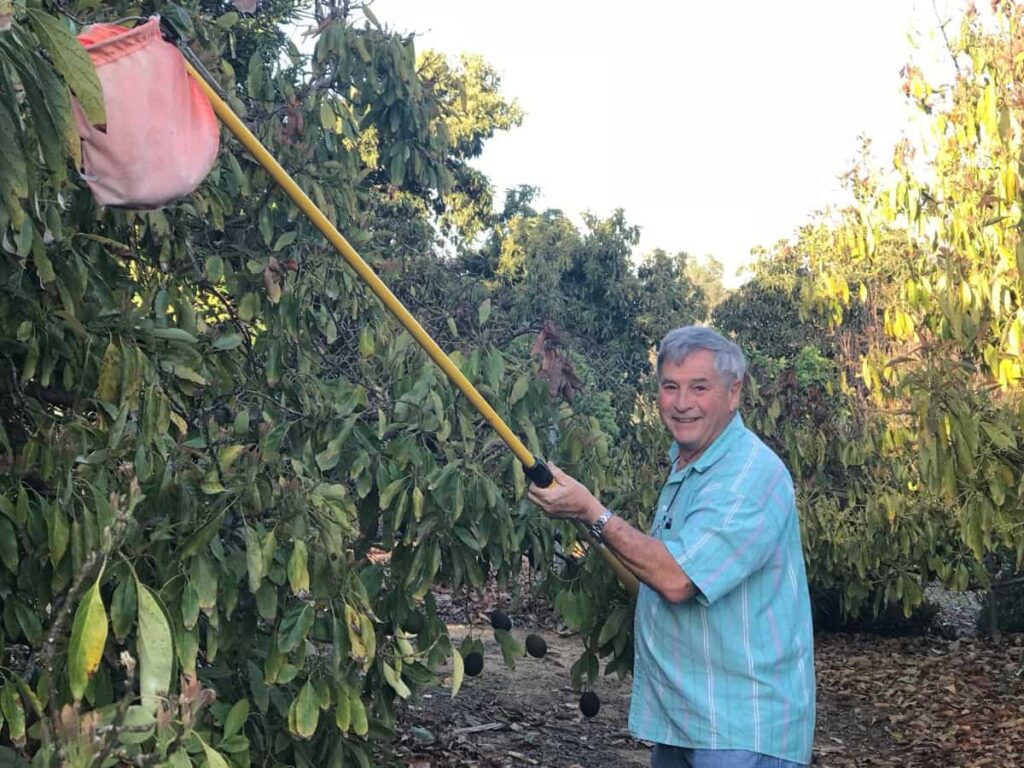
How to Start Avocado Farming in India
Understanding the Avocado Market in India
Avocados have gained popularity recently for their creamy texture and rich flavor. The Indian Avocado market is still relatively small compared to other countries but shows great growth potential. Most Avocados available in the Indian market are imported from countries like Mexico and Kenya. To meet this rising demand and reduce dependence on imports, several states in India have taken initiatives to promote Avocado farming. These efforts include providing subsidies on planting material and technical support to farmers interested in cultivating Avocados.
Top States for Avocado Production in India
With its diverse climate and fertile land, India has several states ideal for Avocado production. Can we grow Avocados in India? Avocados can be grown in India but require specific conditions to thrive. These states provide the perfect conditions for Avocado trees to flourish and yield high-quality fruits. The top states for Avocado production in India are Karnataka, Tamil Nadu, Maharashtra, and Kerala. Other states like Andhra Pradesh, Telangana, Goa, and Odisha have also shown great potential to become major contributors to India’s Avocado market.
Soil and Climate Requirements for Avocado Cultivation in India
Avocado cultivation in India requires specific soil and climate conditions to ensure optimal growth and yield. The first requirement is well-drained soil with a pH of 6 to 7.5. Avocado trees cannot tolerate waterlogged or compacted soils, so proper drainage is crucial. In terms of climate, Avocados thrive in warm tropical or subtropical regions. They prefer temperatures between 20 to 30°C.
In case you missed it: Optimizing Avocado Orchard Management: A Month-by-Month Maintenance Guide for Maximum Yield
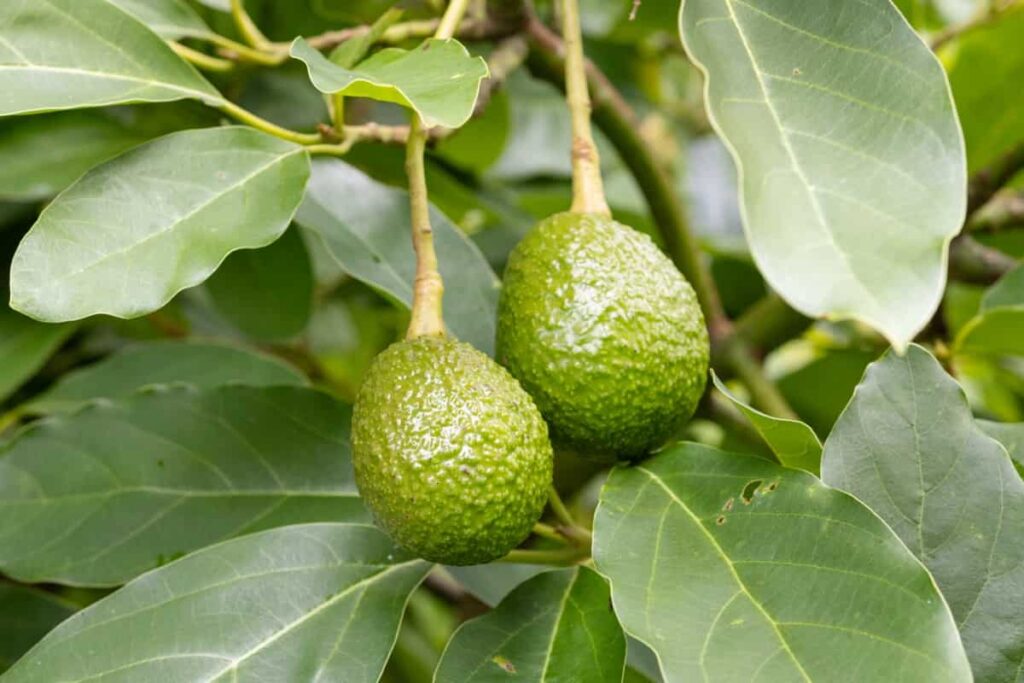
The ideal rainfall for Avocado farming ranges from 1000 to 1500 mm annually, evenly distributed throughout the year. Excessive rainfall during flowering can affect pollination and fruit set, so monitoring weather patterns closely is important. Avocado trees require full sun exposure for at least six hours a day.
Avocado Varieties in India
The varieties cultivated in India go by several names, such as Purple, Green, Fuerte, Pollock, Peradeniya Purple Hybrid, Trapp, Pinkerton, Ettinger and Reed, Round and Long. Avocado varieties in India are as diverse and unique as the country itself.
Sourcing Quality Avocado Seeds or Saplings
Sourcing quality Avocado seeds or saplings is crucial in starting your Avocado farming venture in India. It is important to ensure that you obtain high-quality seeds or saplings from reliable sources to guarantee the success of your plantation. One option for sourcing Avocado seeds is through local nurseries or agricultural centers that specialize in fruit tree cultivation.
Another alternative is connecting with other farmers already involved in Avocado farming. They may be able to guide you on where to source good quality seeds or saplings and share their own experiences and insights. Additionally, online platforms and e-commerce websites dedicated to agriculture can be useful resources for finding reputable Avocado seeds or saplings suppliers.
Preparing the Land for Avocado Plantation
Before planting, it is important to assess the soil conditions and make any necessary amendments to create an ideal environment for Avocado trees. It is essential to select well-drained soil with good fertility. Avocado trees prefer loamy soil for proper water drainage while retaining enough moisture for growth.
Next, clearing the land of weeds, rocks, and debris is important to provide a clean growing space for the Avocado trees. This will minimize competition for nutrients and reduce potential pest problems. Once the land is cleared, it should be plowed or tilled to loosen the soil and create a suitable seedbed. It creates optimal growing conditions that promote healthy tree development and maximize yield potential in your Avocado farm.
In case you missed it: From Seed Selection to Successful Business: Crafting a Comprehensive Avocado Farming Business Plan
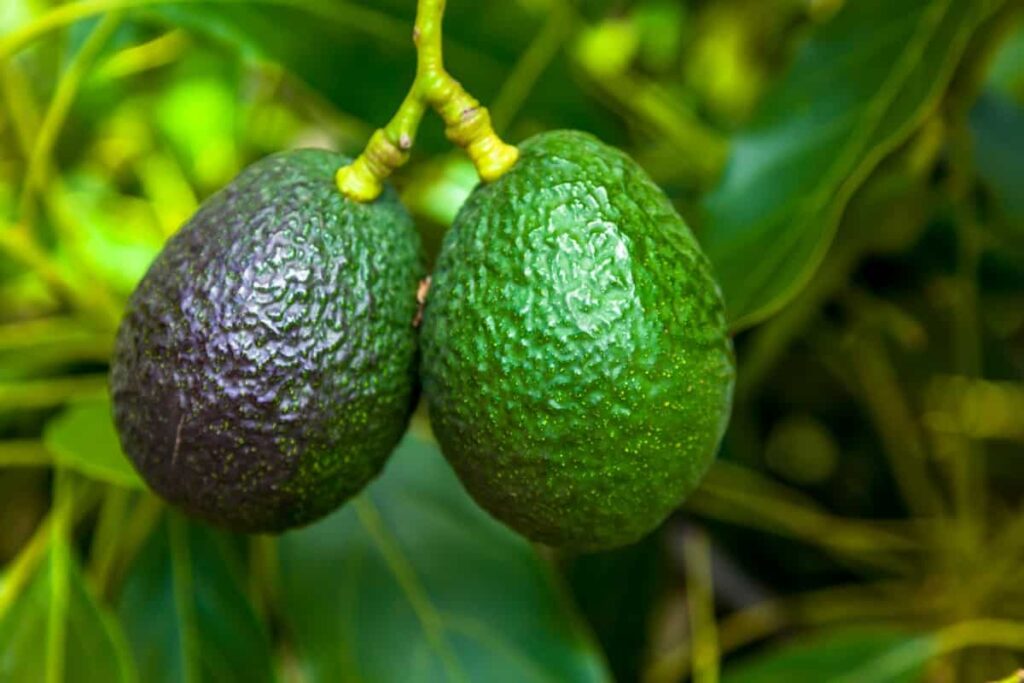
Implementing Proper Irrigation Techniques for Avocado Trees
Proper irrigation techniques play a crucial role in successfully cultivating Avocado trees. Avocado plants have high water requirements, and maintaining adequate soil moisture levels is essential for their growth and productivity. One important aspect to consider when irrigating Avocado trees is the timing. It’s best to water them during early morning or late afternoon to minimize evaporation loss. Drip irrigation systems are highly recommended as they deliver water directly to the Avocado plant roots, reducing wastage.
Providing Adequate Nutrient Management for Avocado Plants
Proper nutrients play a crucial role in the successful cultivation of Avocado plants. Providing the right balance of essential nutrients to these trees is important to ensure healthy growth and high yields. Avocado plants have specific nutrient requirements at different stages of their growth cycle. They require higher nitrogen (N) and phosphorus (P) levels during the initial stage for root development and overall plant vigor.
As the plants mature, potassium (K) becomes more important for fruit formation and quality. Apart from these major macronutrients, Avocados also need micronutrients like iron (Fe), manganese (Mn), zinc (Zn), copper (Cu), boron (B), molybdenum (Mo), and chlorine (Cl). These micronutrients are required in smaller quantities but are equally essential for optimal growth. Organic fertilizers can improve soil structure and fertility.
Establishing a Proper Planting System for Avocado Farming
Site Selection: Choose a location with well-drained soil and good air circulation. Avocado trees thrive in areas with mild temperatures and protection from strong winds.
Spacing: Allow adequate space between Avocado trees to promote healthy growth and maximize yield. How many Avocado trees per acre in India? The recommended planting space for Avocados in India is 3.5 meters tree to tree and 7 meters row to row. This spacing allows room for each tree to grow and thrive, ensuring optimal yield and fruit quality. This spacing allows you to accommodate 165-170 Avocado plants per acre.
Digging Holes: Prepare the planting holes by digging them twice as wide and deep as the root ball of the sapling or seedling you plan to plant.
Planting Technique: Gently remove the Avocado sapling from its container without disturbing its roots too much. Please place it in the prepared hole, ensuring it sits at the same level as originally planted.
In case you missed it: How to Fertilize Avocado Trees For Insane Fruit Set: Schedule for Natural, Organic, and Chemical Application
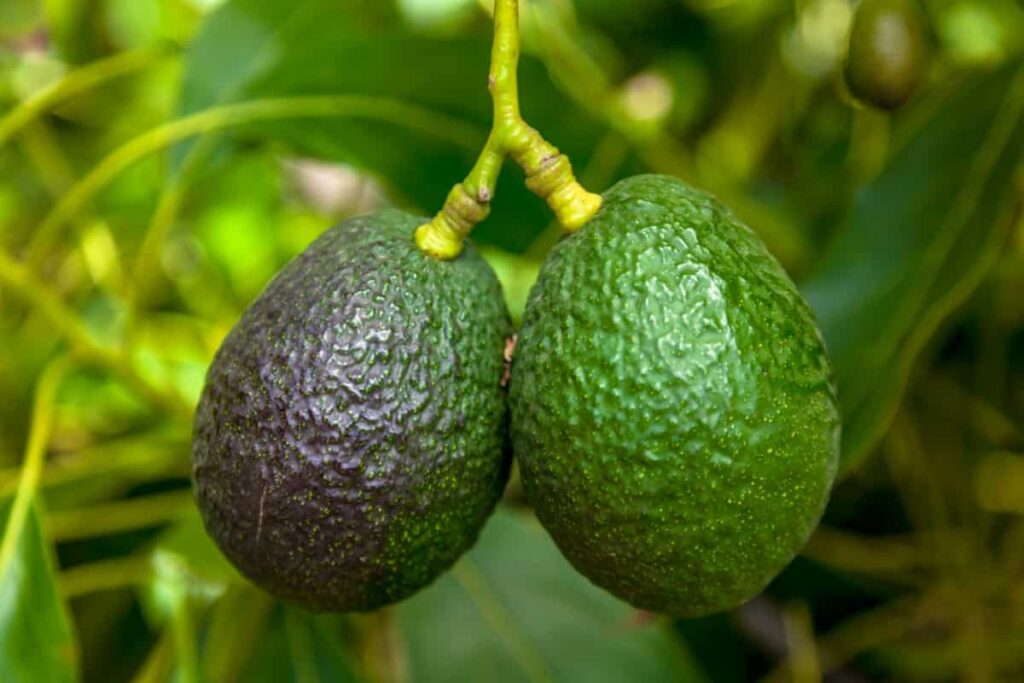
Mulching: Apply mulch around each Avocado tree after planting to conserve moisture, suppress weed growth, and provide essential nutrients over time.
Implementing Effective Pest and Disease Management Practices
Avocado trees are susceptible to many pests and diseases impacting their health and productivity. One of the key strategies in pest management in Avocados is regular monitoring of the farm. Farmers should regularly inspect their Avocado trees for any signs of infestation or disease symptoms. Early detection allows them to take immediate action before the problem escalates.
Farmers can use natural methods such as introducing beneficial insects that prey on harmful pests to control pests. Additionally, organic pesticides from neem oil or garlic extract can be a safe alternative to chemical pesticides. Disease management involves maintaining proper hygiene in the orchard by removing fallen leaves and fruit debris that could harbor pathogens. Crop rotation is another effective practice where Avocados are grown in different areas of the farm each year. This disrupts pest life cycles and reduces soil-borne diseases.
Pruning and Training Techniques for Avocado Trees
Proper pruning helps to shape the tree, control its size, improve air circulation, and promote fruit production. Regarding Avocados, pruning is typically done during the early years of tree establishment. Removing dead or damaged branches and suckers growing at the tree’s base is important during the first year. This will ensure that the plant’s energy goes towards healthy growth. Training techniques involve guiding the young Avocado tree into a desirable shape through careful selection and positioning of branches.
This can be achieved using stakes or trellises for support and tying down branches in desired directions. Regular monitoring is necessary to maintain proper form and prevent breakage due to heavy fruit load or strong winds. How long does it take to grow Avocado in India? When you choose to raise Avocado plants from seeds, you must understand that they have a slow growth rate. These seed-grown plants typically take five to six years to start bearing fruits.
Managing Weed Control in Avocado Farms
Weed control is a crucial aspect of Avocado farming to ensure the healthy growth and productivity of the trees. One common method used in Avocado farms is manual weeding. This involves removing weeds by hand or using tools such as hoes or cultivators. It requires regular farm monitoring and diligent effort to keep the area free from unwanted vegetation.
Another approach is mulching. Applying organic materials like straw, wood chips, or leaves as a layer around the base of Avocado trees helps suppress weed growth while retaining soil moisture and regulating temperature. Herbicides can also be utilized under professional guidance to control weeds effectively. However, using herbicides approved for use in Avocado farms and following recommended application rates is important.
Pollination and Fruit Set in Avocado Farming
Plant pollination plays a crucial role in the fruit set of Avocado farming. Avocado trees are not self-pollinating, requiring cross-pollination from other compatible Avocado varieties to produce fruit. In India, the most common method for pollination is through bees and wind. Wind also contributes to pollination by carrying pollen grains from one tree to another. Therefore, it is advantageous to have proper spacing between Avocado trees, allowing wind movement within the orchard for effective cross-pollination.
In case you missed it: Crop Harvest Calendar for Alabama: Fruits and Vegetables Season by Month Chart

Timing is critical when it comes to pollination in Avocado farming. The peak flowering period usually occurs during spring or early summer when temperatures favor flower development and bee activity. To ensure a good fruit set, it is essential to have a diverse range of compatible Avocado varieties planted together in an orchard.
Harvesting and Post-Harvest Handling of Avocados
Harvesting Avocados should be done when they are fully mature but not overripe. The best way to determine this is by gently squeezing the fruit – it should yield slightly under pressure. When harvesting, use sharp pruning shears or a pole picker to carefully cut or twist off the Avocados from their stems.
Be sure to handle them with care to avoid bruising or damaging them. Once harvested, Avocados need proper post-harvest handling to ensure their quality and shelf life. Start by removing any debris from the surface of the fruit using a clean cloth or brush. Remember not to wash Avocados before storing them; excess moisture can promote spoilage. It’s best to wash them just before consuming them.
Avocado Yield Per Acre
On average, a well-managed commercial Avocado orchard can yield around 7,000 to 10,000 pounds of Avocados per acre per year. The potential yield of Avocados is a key factor to consider when starting Avocado farming in India. As the trees mature and reach four years old, their productivity increases even further. With these numbers in mind, it becomes clear that Avocado farming can be profitable for farmers in India.
Avocado Farming in India Cost
The total cost involved in Avocado cultivation is about 6 to 7 lakhs. Thanks to the increasing demand for this nutritious fruit, Avocado farming in India has gained popularity in recent years. However, like any agricultural venture, it comes with its own set of costs. The production cost of Avocados can vary depending on factors such as the variety being cultivated and the growing conditions.
One can expect to invest around 6 to 7 lakhs to establish an Avocado farm in India. This includes expenses such as purchasing quality Avocado seeds or saplings, preparing the land for plantation, implementing proper irrigation techniques, providing nutrient management, managing pests and diseases, and weed control measures.
Avocado Farming Profit Per Acre
Around 16 lakhs of revenue (8000kg x Rs 200 per kg) is possible in Avocado farming. Avocado farming in India has gained immense popularity due to its lucrative profit potential. One of the key factors farmers consider when venturing into Avocado cultivation is the yield per acre.
Farmers can expect a remarkable yield of around 8 tons in just one acre of Avocado farm. This high yield ensures a bountiful harvest and promises substantial profits in Avocado farming. With proper planning and management strategies, Avocado farming can be profitable for Indian farmers.
Avocado Farming Training in India from ICAR and KVK
To support and guide farmers in their Avocado cultivation journey, various agricultural institutions like ICAR (Indian Council of Agricultural Research) and KVK (Krishi Vigyan Kendra) provide valuable training programs. ICAR is a premier research organization that offers comprehensive training on all aspects of Avocado farming. Their expert trainers delve into soil preparation, climate requirements, planting techniques, irrigation management, pest control, and post-harvest handling.
In case you missed it: Crop Harvest Calendar for California: Fruits and Vegetables in Season by Month Chart of California
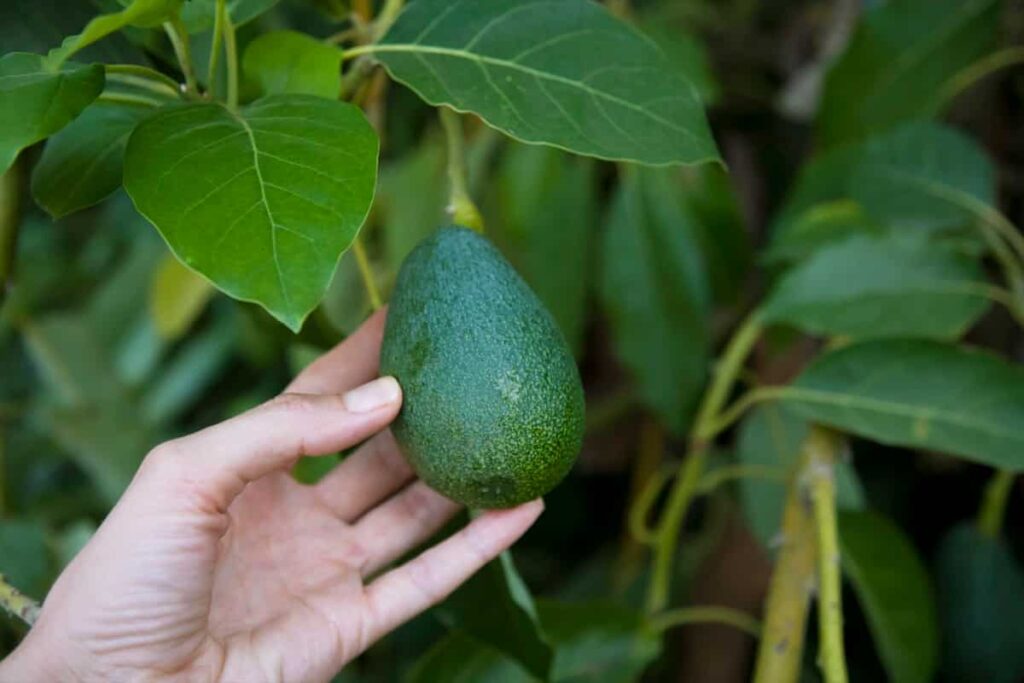
KVKs are knowledge centers established by ICAR across different regions of India. They serve as local hubs for disseminating practical information related to agriculture. Farmers can attend workshops conducted by experienced professionals who share valuable insights specific to their particular region’s conditions. Indian Avocado growers can make informed decisions, contributing to higher yields and profitability.
Avocado Farming in India with Yield, Cost, and Profits
| Avocado Framing Steps | Conditions |
| Soil Requirements | pH level ranging from 6 to 7.5 |
| Top states for Avocado production in India | Karnataka, Tamil Nadu, Maharashtra |
| Climate | Ideal rainfall- 1000 to 1500 mm annually, temperatures between 20 to 30°C |
| Sunlight | At least six hours a day |
| Avocado Varieties in India | Purple, Green, Fuerte, Pollock, Peradeniya Purple Hybrid, Trapp, Pinkerton, Ettinger and Reed |
| Sourcing quality Avocado seeds or saplings | From local nurseries or agricultural centers, online platforms and e-commerce websites |
| Proper Irrigation Techniques | Drip irrigation is highly recommended |
| Adequate nutrients | Nitrogen (N) and phosphorus (P), potassium (K) for fruit formation and quality |
| Weed control | Manual weeding, mulching, herbicides, regularly monitoring the farm |
| Pollination and Fruit Set | Cross-pollination timing will be during the spring or early summer months |
| Harvesting Avocados | Typically, from February to October |
| Avocado Yield Per Acre | On average, a well-managed commercial Avocado orchard can yield around 7,000 to 10,000 pounds (3,175 to 4,535 kilograms) of Avocados per acre per year. |
| Avocado Farming in India Cost | About 6 to 7 lakhs |
| Avocado Farming Profit Per Acre | Around 16 lakhs of revenue is possible. |
Conclusion
Avocados have gained immense popularity worldwide, creating a lucrative market for farmers. With its increasing popularity as a superfood, the demand for Avocados is soaring domestically and internationally. This presents a main opportunity for farmers to venture into Avocado cultivation and reap substantial profits. Additionally, Avocado trees are well-suited to Indian climatic conditions.
- Sheep Farming Business Plan for Beginners
- Aquaponic Farming at Home: A Step-By-Step Guide
- Profitable Village Farming Business Ideas in 2024
- High-Yield Aquaculture: Fast-Growing Fish for Farming
- Effective Fish Pond Construction Techniques for Beginners
- Irrigation and Water Management in Pineapple Farming
- Blossom to Harvest: Mastering Flowering and Pollination in Papaya Farming
- Pig Fattening Essentials: From Selection to Sale for Beginners
- Raising Wagyu Cattle: A Complete Guide for Premium Beef Production
- Soil Types and Their Water Holding Capacity
- Optimizing Irrigation Schedules for Coconut Groves for Enhanced Yield
- Espresso Your Garden: Coffee Grounds for Healthier Acid-Loving Plants
- The Best Soil Mix for Snake Plants: How to Mix Your Own Snake Plant Soil
- Green Thumb Success: Expert Tips for Cultivating Greenhouse Beans All Year Round
- Bloom All Year Round: The Ultimate Guide to Indoor Hyacinth Care
- Eco-Friendly Gardening: How to Make Liquid Fertilizer from Kitchen Waste
- Ultimate Guide to Grow Anise in Pots: Explore Seed Propagation to Harvesting
- Guide to Raising Chester White Pigs: Discover Breed Facts to Growth Management
- Mastering the Elegance: The Ultimate Guide to Weeping Cherry Tree Care, Planting, and Maintenance
- Ultimate Guide to Planting Garlic in Grow Bags: Growing Strategies for Beginners
- How to Fix Spider Plant Leaf-Related Problems: Natural and Organic Remedies
- 10 Reasons Why Your Tulsi Plant is Shedding Leaves: Home Remedies and Solutions
- Optimizing Growth and Yield: The Advantages of Palm Bunch Ash Fertilizer
- Utilizing Neem Oil Extract as a Natural Pesticide for Hydrangea
- From Soil to Harvest: Various Ways in Which Farmers Can Use AI Tools
- Steps to Encourage and Induce Citrus Flowers: A Comprehensive Guide
- How to Fix Snake Plant Leaf-Related Issues: Natural and Organic Remedies
- Transform Your Garden into a Fragrant Oasis with Raat Ki Rani (Night Blooming Jasmine)
- Discover the Ideal Chicken Breeds for Philippine Farms
- How to Create a Poultry Egg Farm Business Plan for Profits
- Grow Lemon Cucumbers Like a Pro: Insider Techniques for Bountiful Yields
- Ultimate Guide to Caring for Your Pink Princess Philodendron: Tips for Thriving Variegation
- Areca Nut Profit Per Acre: Calculating Yield and Cost of Cultivation
- How Kaveri Chicken is Becoming a More Profitable Breed in Indian Backyards
- Transform Your Barn: 9 Steps to Convert a Horse Stall into a Chicken Coop
- Exploring Suffolk Sheep Disadvantages with Limitations and Challenges
